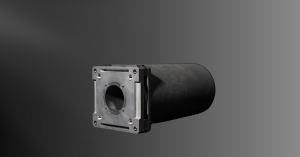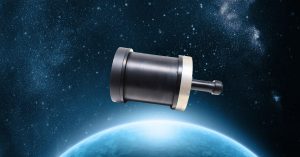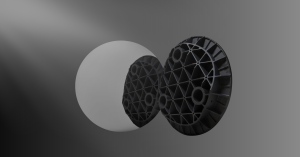Key Takeaways
- Reflector telescopes use mirrors to form images. Key designs include Newtonian, Cassegrain, and Gregorian.
- Modern astronomy increasingly relies on SiC reflector telescopes. These telescopes offer advantages like lightweight construction, high precision imaging, excellent thermal stability, and strong radiation resistance.
- Silicon carbide enables the creation of large aperture mirrors, crucial for advanced astronomical research, as seen in telescopes like DKIST and LORRI.
The reflector telescope is unique among telescopes because of its reflective design. Instead of using lenses to refract or bend light to form images, it uses a combination of curved surfaces and flat mirrors to reflect light for imaging.
Modern astronomical telescopes are typically reflector telescopes. Gregorian telescopes, Newtonian telescopes, and Cassegrain telescopes are all variations on the basic design. Here we’ll take a closer look at these three types of telescopes, and then go on to look at a reflector telescope produced with modern materials: the silicon carbide reflector telescope.
Three Types of Telescopes: A Closer Look
Telescopes can be broadly categorized into three main types, each with distinct optical principles and ideal use cases:
Newtonian Reflector Telescope
The original Newtonian reflector telescope was designed by Isaac Newton in 1668. This type of telescope is based on a primary mirror (parabolic surface) and a plane secondary mirror, and the light path is deflected to the side of the lens barrel.
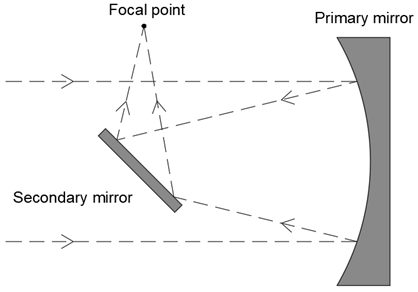
Cassegrain Reflector Telescope
If you need a long focal length with a short tube length, you may prefer a Cassegrain telescope, as first designed by Laurent Cassegrain in 1672. The Cassegrain reflector telescope structure is usually a primary mirror (parabolic surface) and a convex secondary mirror, and the optical path passes through the central hole of the primary mirror.
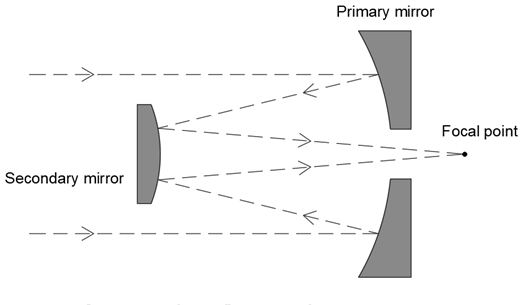
Gregory Telescope
Another option is the Gregory telescope; a design that eliminates spherical and chromatic aberration. The structure of the Gregory reflector telescope involves a primary parabolic mirror surface and a concave ellipsoid secondary mirror. The quality of the image is dependent on the size of the aperture, and large versions of this design are used in many large telescopes like the Magellan telescopes, the Large Binocular Telescope, and the Vatican Advanced Technology telescope.
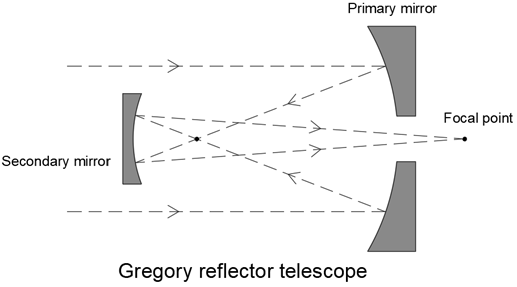
Since all of these designs rely extensively on mirrors, it is particularly important to choose appropriate mirror materials. Mirror materials mainly include glass materials, low expansion metals, and ceramics. Glass materials have low thermal expansion coefficients and excellent optical properties, but their thermal conductivity and specific stiffness are poor. Metal materials have excellent thermal conductivity, but their thermal expansion coefficients are relatively large, and their surface shape accuracy is easily affected by temperature. Metal mirrors do have the advantage of high melting point, high hardness, high wear resistance, and oxidation resistance.
What is a Silicon Carbide Reflective Telescope?
If metal and glass both have significant downsides, what is the material of choice for large-format modern reflective telescopes? A modern material that has nearly ideal mechanical and physical properties: silicon carbide. Silicon carbide is a lightweight, stable compound produced by the reaction of carbon and silicon at high temperatures. When sintered or heat treated, these elements react to form a structure with ceramic characteristics.
Silicon carbide reflective telescopes, based on silicon carbide mirrors, are built to take advantage of the many advantages of this modern substrate. Lightweight, durable, and with good radiation resistance, these telescopes are pushing the boundaries of astronomical research worldwide.
One example of a silicon carbide reflector telescope is the 4m Daniel K. Inouye Solar Telescope (DKIST), formerly known as the Advanced Technology Solar Telescope. This Gregory reflective telescope was designed to study solar magnetism and the solar winds and flares controlled by it, and utilizes a 4.24 meter primary mirror to do so. The secondary silicon carbide mirror has dimensions of 0.65 m, and the telescope has adaptive optics meant to correct for atmospheric distortions.
The LORRI (Long Range Reconnaissance Imager) on board the New Horizons spacecraft is another silicon carbide reflecting telescope. The design of telescope is Ritchey–Chrétien, a specialized type of Cassegrain reflector, and it features a main silicon carbide mirror with a diameter of 208 mm. The effective focal length of the telescope is 2630 mmm, and the imaging system can take pictures at very low light. It hs been used to successfully take high resolution images of Jupiter, Pluto, Arookoth, and the moons of Jupiter and Pluto.
Advantages of the SiC Reflector Telescopes
But why, exactly, has SiC become the substrate of choice for high performance reflector telescopes? As an optical material for telescopes, silicon carbide has some important advantages.
- Lightweight: Silicon carbide material has high specific stiffness, which enables designers to reduce weight while maintaining high performance. This is particularly important for space telescopes, and can significantly reduce launch cost and energy consumption in orbit.
- High Precision: The surface accuracy of the silicon carbide mirror can reach nanometer level, which ensures the high-resolution imaging ability of the telescope.
- Good Thermal Stability: Silicon carbide material has low thermal expansion coefficient and high thermal conductivity, and can maintain stable performance at extreme temperatures. This makes it well suited for telescopes that need to operate in a wide temperature range, such as those working in space.
- Strong Radiation Resistance: Silicon carbide material has excellent radiation resistance to space particles, prolonging the service life of telescopes produced from it.
- Large aperture: Silicon carbide can be used to manufacture large aperture mirrors, even up to 4 meters.
Researchers are increasingly turning to silicon carbide when they require a material that is strong, durable, and suitable for high performance optics. Whether on the ground or in space, silicon carbide mirrors are well suited for use in high-performance telescopes.
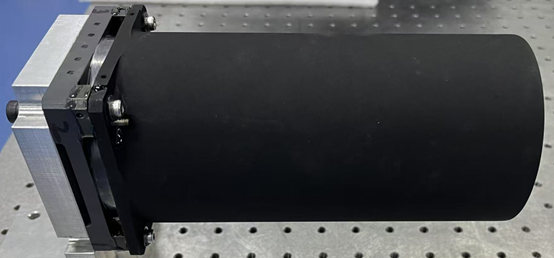
Reflector Telescopes at Avantier
At Avantier, we produce custom optics for a wide range of applications, including cutting-edge space exploration. If you need custom optics for your reflector telescope or simply would like some design help in getting started, we’d love to partner with you. Contact us today to place your custom order or request for a quotation.
References
- Bae JI, Lee HB, Kim JW, Lee KM, Myung-Whun K. Development of a Silicon Carbide Large-aperture Optical Telescope for a Satellite. Korean J. Opt. Photon. 2022;33:74-83. https://doi.org/10.3807/KJOP.2022.33.2.074
- Rimmele, The unique scientific capabilities of the Advanced Technology Solar Telescope, Advances in Space Research, Volume 42, Issue 1, 2008,
- Pages 78-85, ISSN 0273-1177, https://www.sciencedirect.com/science/article/pii/S0273117708001129
- Robichaud et a. “Silicon carbide optics for space and ground based astronomical telescopes”, Proc. SPIE 8450, Modern Technologies in Space- and Ground-based Telescopes and Instrumentation II, 845002 (13 September 2012); https://www.spiedigitallibrary.org/conference-proceedings-of-spie/8450/845002/Silicon-carbide-optics-for-space-and-ground-based-astronomicaltelescopes/10.1117/12.926831.short
GREAT ARTICLE!
Share this article to gain insights from your connections!


